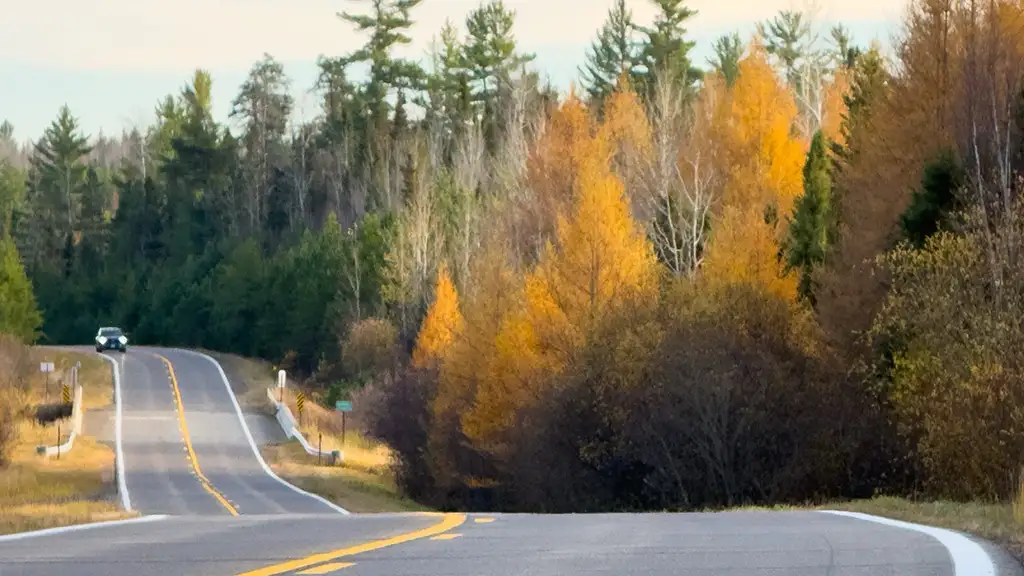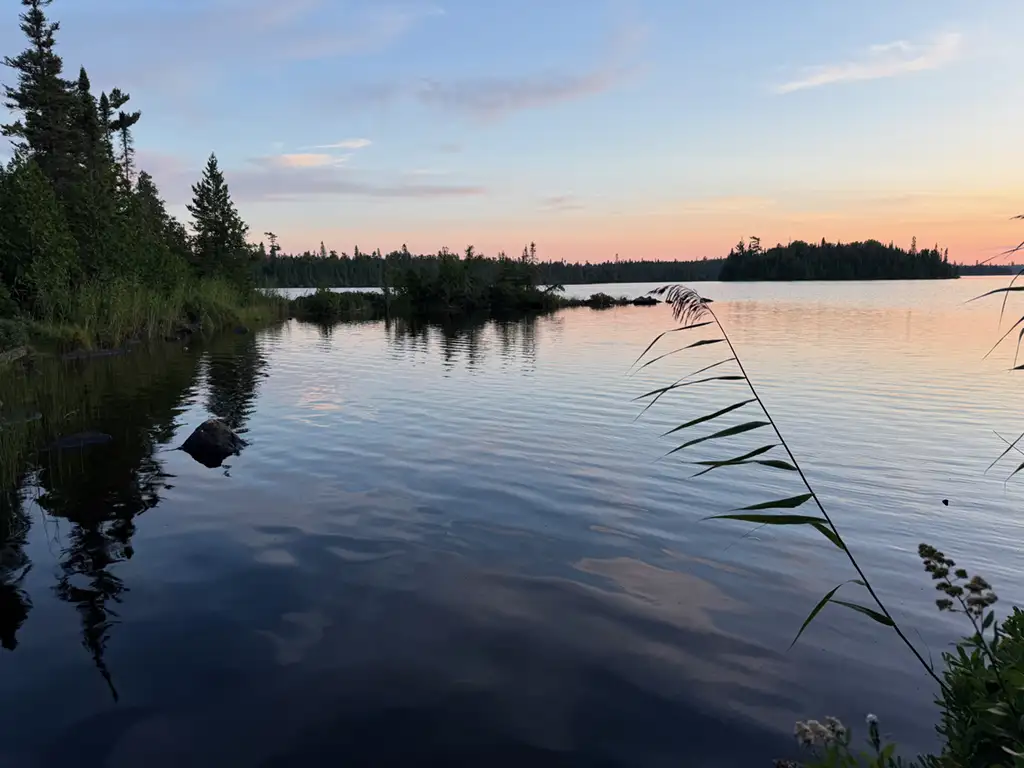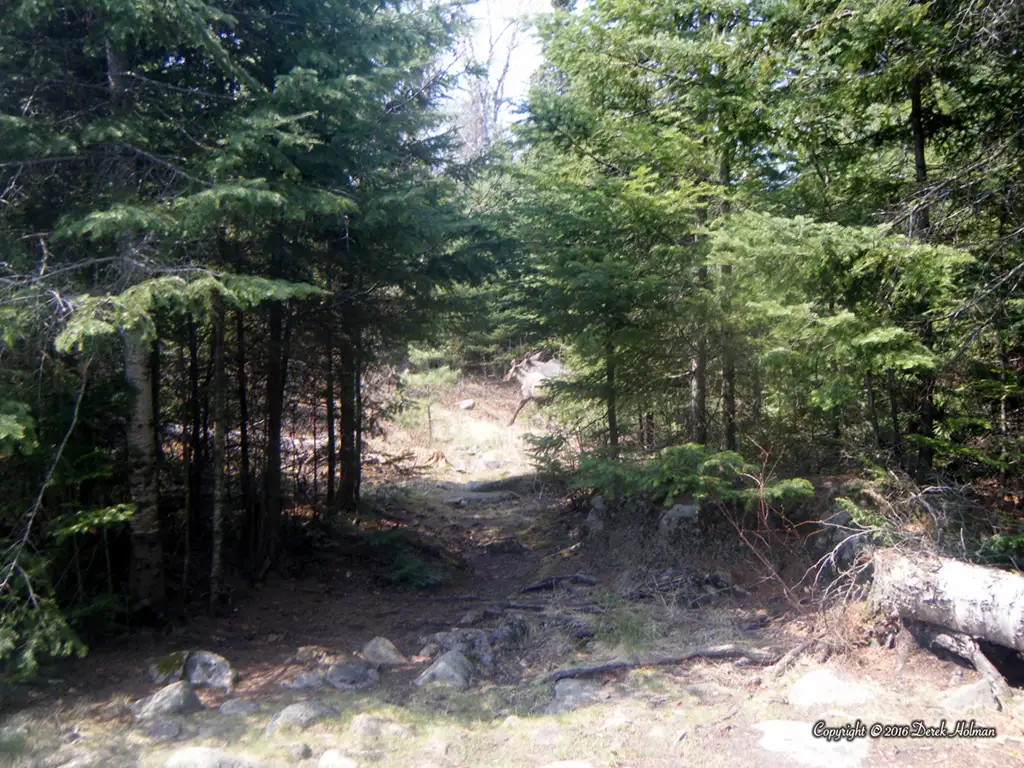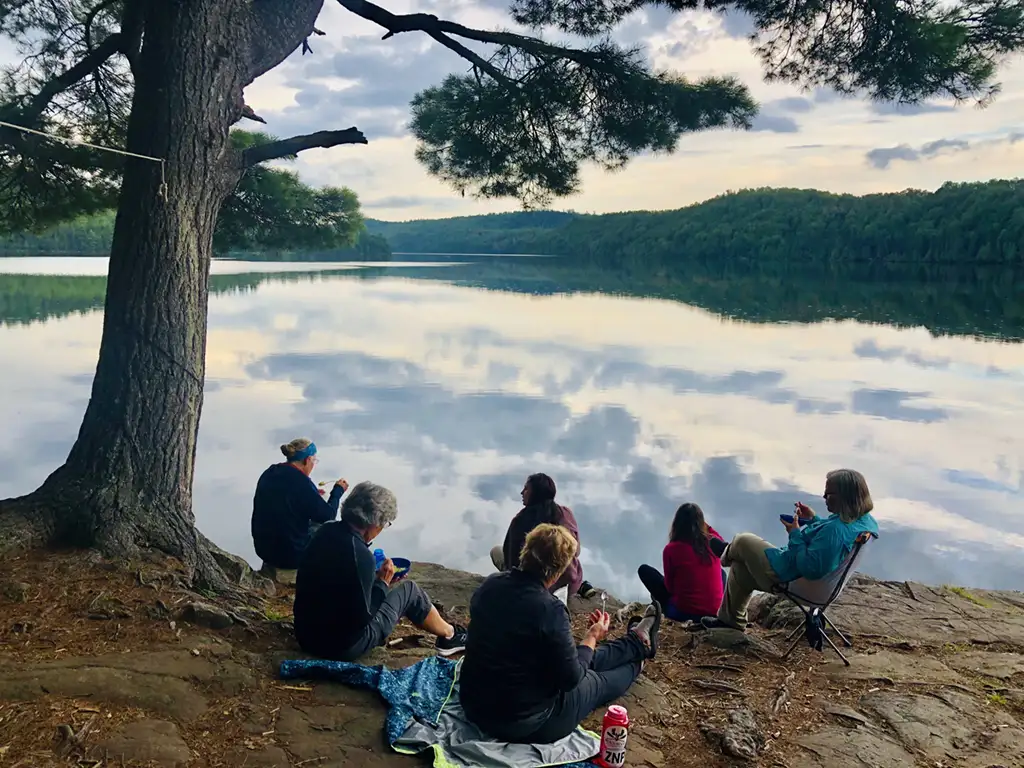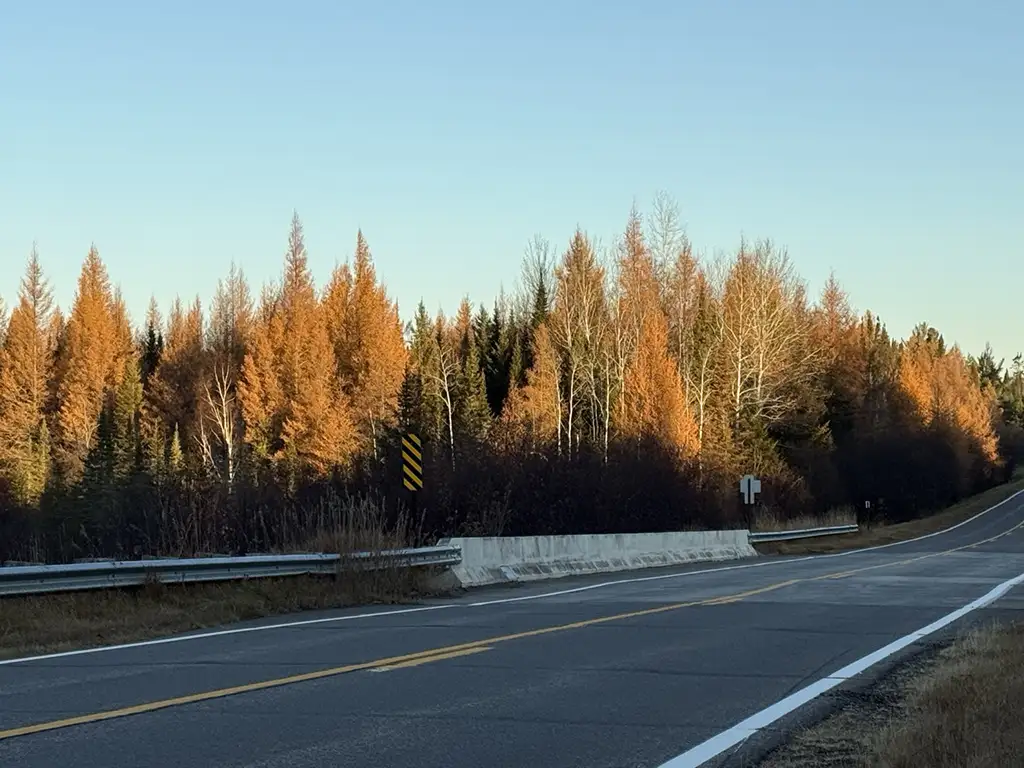The Overture of Silence, A Moment of Stillness
As the dust settles around Rockwood Lodge after a busy summer season, the end of fall is near. We see the culmination of fall not as the end of a season, but as a climax worthy of the best of our Boreal forest. The vibrant reds of maple and the gold of birch and poplar have faded and dropped to the forest floor. The trees now reveal a starker, more skeletal landscape. The air is sharper, holding the promise of a long winter. And we’re ready.
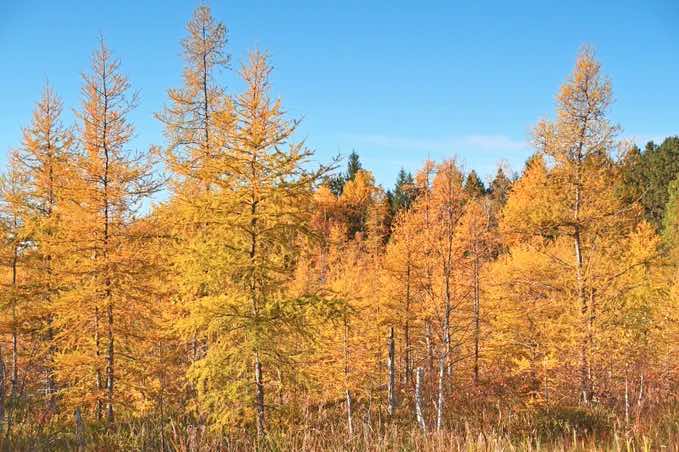
The forest is taking its final color call right now with its star, the Tamaracks, which have turned a vibrant golden/yellow. “We absolutely love tamaracks,” said Rockwood co-owner Carl Madsen. “Not a deciduous, not a conifer, but it’s a conifer that is deciduous.”
Tamaracks have needle-like, flat, soft, and slender leaves. About an inch long, the needles are bright green in spring before turning in late September through October and then falling to the ground with early snows. They are a beautiful sight on a sunny fall day.
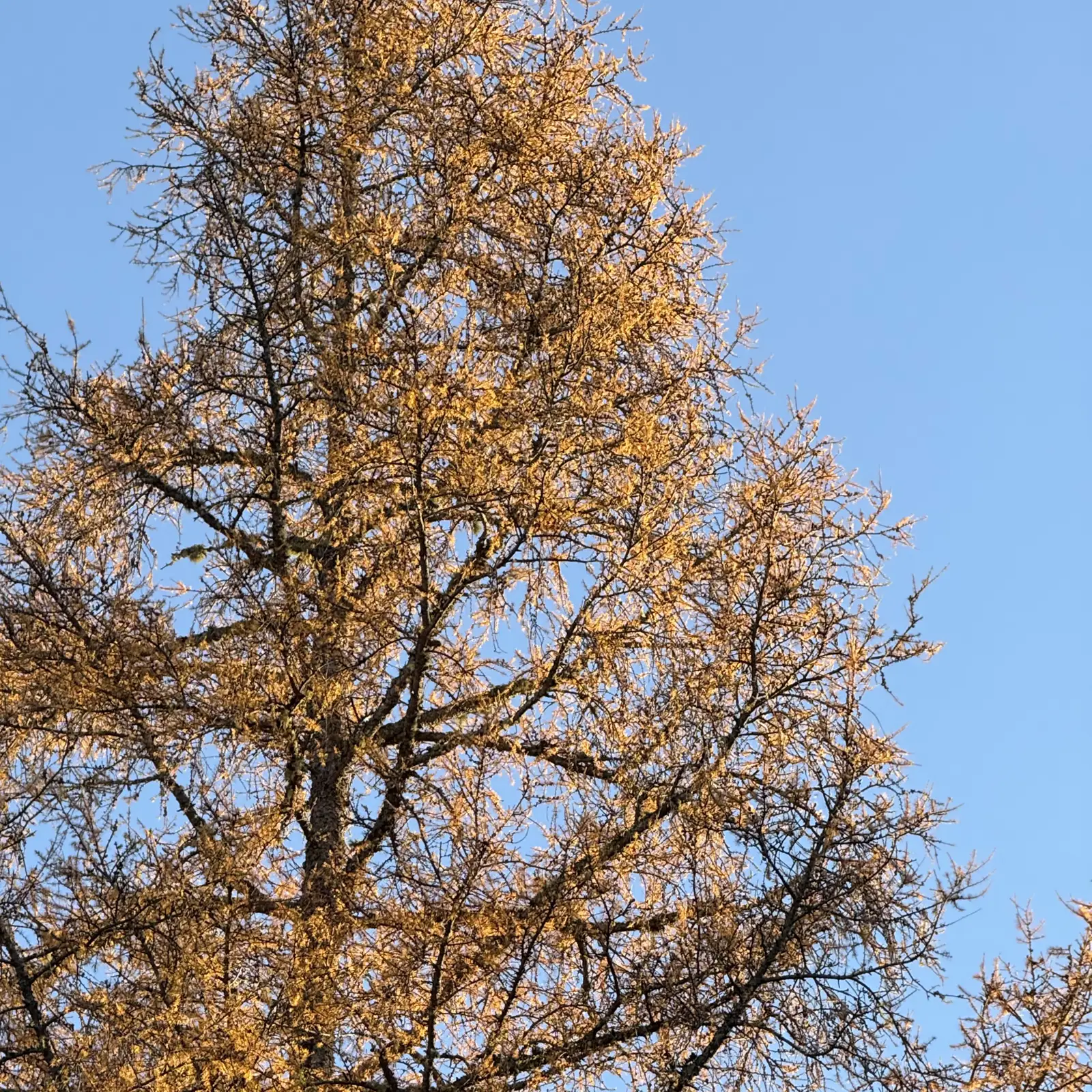
Tamarack is the only conifer in Minnesota that sheds all its leaves each fall. The tree’s soft, feathery foliage provides a delicate contrast against the ruggedness of its bark, which is deeply furrowed and often reddish-brown.
Often called the “American Larch,” it is a unique and vital part of Minnesota’s natural heritage, distinguished by its characteristics that set it apart from other trees. The Tamarack is deeply rooted in the special sense of place we never take for granted. It is a high point in the spiritual rhythm and the refreshing quiet of the Northwoods. True Northwoods observers know this is when the land plays its final, most exquisite chord—the golden hue of the Tamarack.
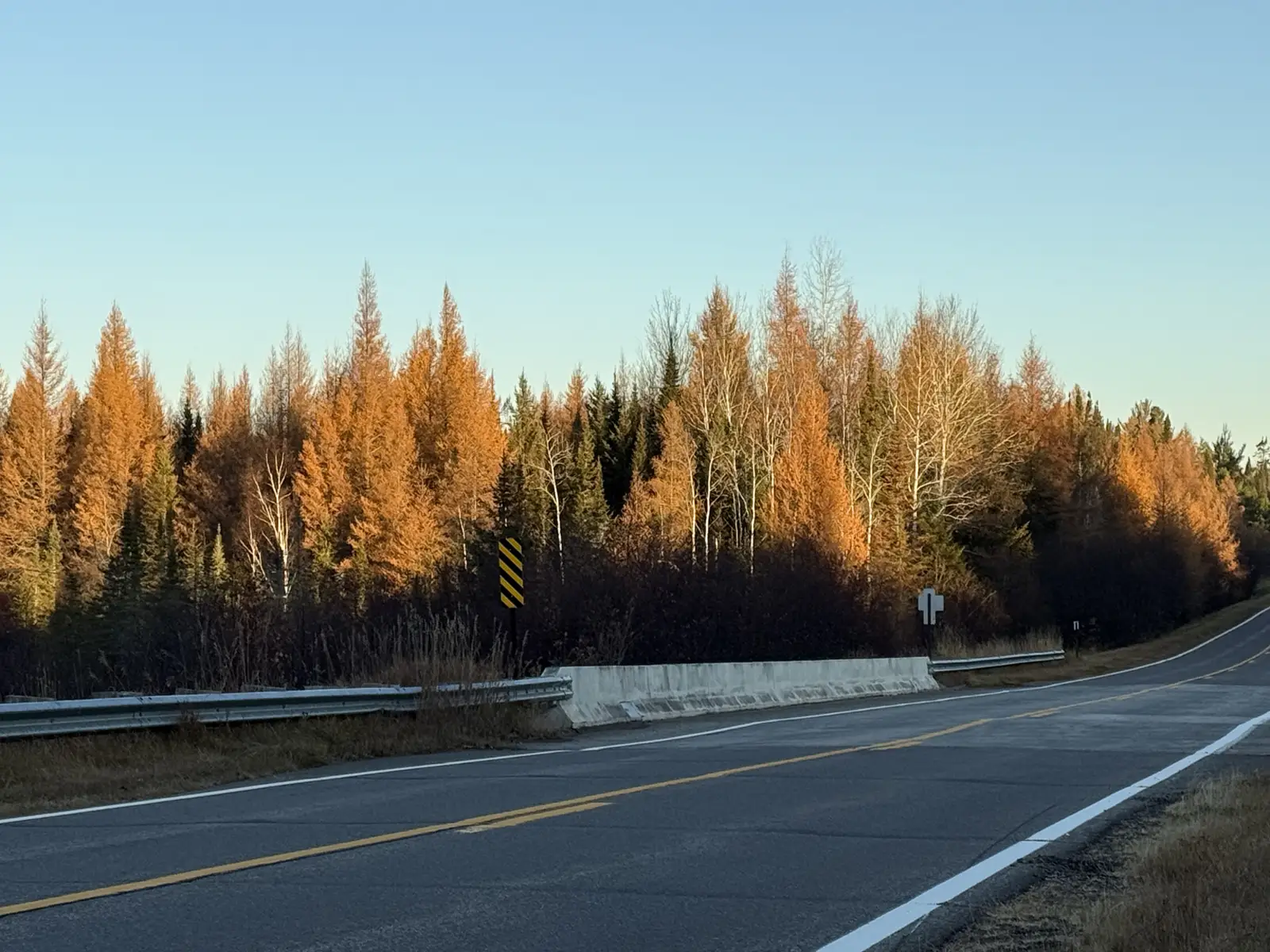
The fine operators of Rockwood have observed this cycle of the changing seasons countless times. The Tamarack is a trusted, annual mystery they relish. It is a reward for those willing to wait patiently and listen closely. It is not a spectacle for the masses, like the flaming red of maple trees and the radiant yellow of birch and poplar. It is instead a spectacle that brings observers a moment of quiet, personal grace.
Consider the Tamarack’s uniqueness. It’s a conifer, but it defies its evergreen brethren. It doesn’t hold onto its needles. Instead, it releases them in a fiery goodbye. The Tamarack’s color is a deep, almost luminous gold that seems to glow from within. This is a color that stands in stark, beautiful contrast to the deep, somber greens of the surrounding jack pines and black spruces, conifers which will soon be carrying the weight of the snow. It’s a sight that inspires awe and reverence, a testament to the unique beauty of the Tamarack.
So, what does this “last act,” this “final chord” mean for us? It’s a lesson in the resilience of the land in our forest, and its refusal to go quietly into the winter. The Tamarack, with its golden hue, stands as a symbol of resilience, inspiring us to face the challenges of the changing seasons with grace and strength. Its ability to shed its needles in a beautiful surrender, not a sign of death, is a powerful reminder of the resilience and adaptability of nature.
Get close to them, and you’ll know the rustle of the Tamarack needles is a sound distinct from the whispering pines and Aspen. The afternoon sun, low and golden, filters through the shimmering needles, casting a warm, fleeting light over the land. It’s a moment to find a quiet place, sit on a lichen-covered rock, and observe.
Unlike the shedding of needles off Spruce trees devoured by the Spruce Budworm, the shedding of the Tamarack needles does not mean death. It is a deliberate and beautiful surrender, a final shedding before the deep slumber of winter. This act of shedding is a unique feature of the Tamarack, symbolizing its resilience and adaptability to the changing seasons.
The Tamarack thrives in wetland environments like bogs, swamps, and wet forests. You can find them along the Gunflint Trail. Take a drive, find an intersecting trail, and get out for a hike. Up close, you’ll get a true sense of the scale and color of the Tamarack. When you find them near water, especially on a crisp, sunny day, you’ll see their stunning reflection on still water. This is an experience that will deepen your connection to the beauty of nature, and we encourage you to seek it out.
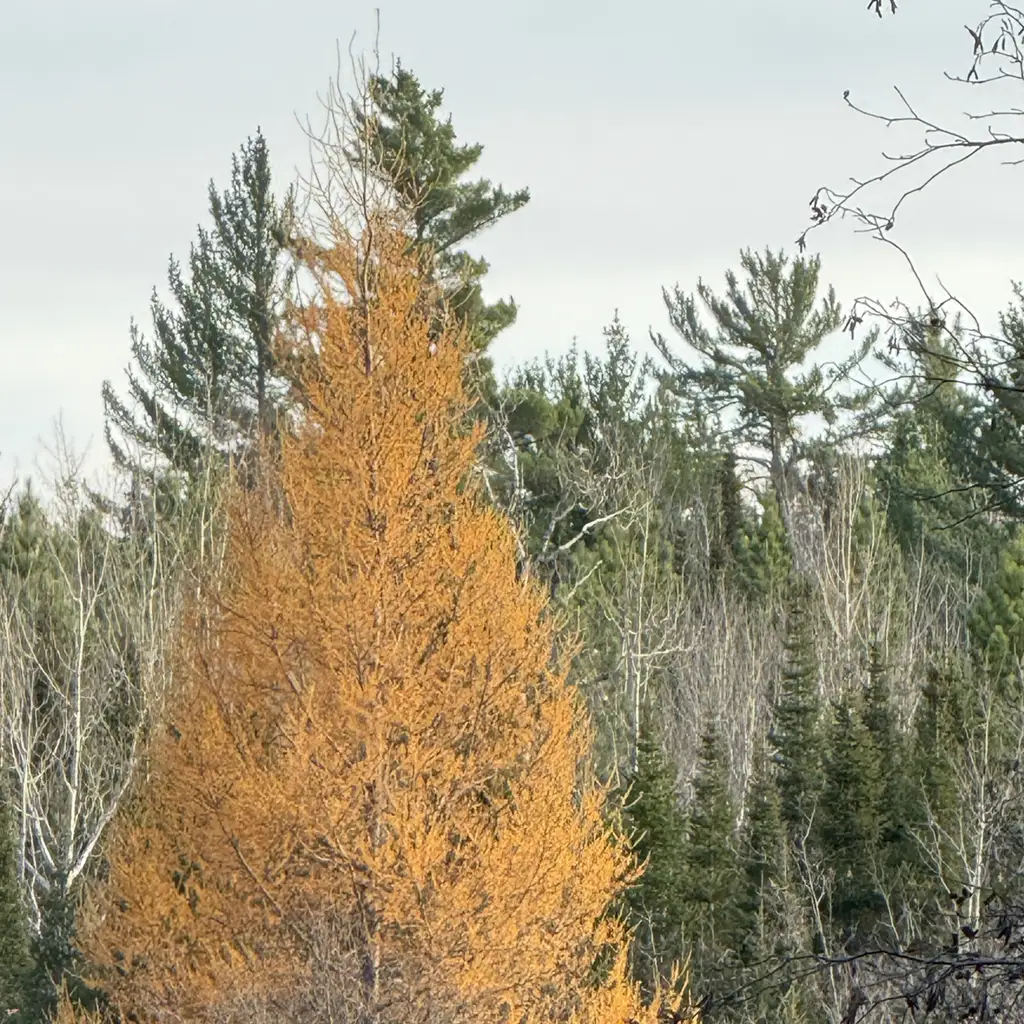
Here at Rockwood, we’d be happy to share our favorite locations to see and contemplate these unique, golden groves, towering reminders of nature permeating life near the Boundary Waters and Gunflint Trail.
We end this newsletter with a sense of anticipation. Those golden needles will soon fall, covering the forest floor in a carpet of rust. Then winter is truly here. But the memory of the Tamarack’s final, radiant burst sustains our spirit until spring.
The cycle of the seasons and the quiet wisdom that the Gunflint Trail offers to all who are willing to look and listen is why we do what we do here.
“The Tamarack” by unknown author
Golden needles, swaying light,
A silhouette against the night.
In winter’s chill, you stand alone,
A beacon in a world of stone.
Your roots run deep, your spirit strong,
You weather storms that last all long.
A symbol of hope, a testament to grace,
The Tamarack, in every place.
“Larch” by Robert Frost
Larch, you have changed your coat at last,
From green to gold, a brilliant cast.
You stand alone, a beacon bright,
Against the darkening winter night.
Your needles fall, a golden rain,
Upon the forest floor again.
And though you’re bare, you still stand tall,
A testament to nature’s call.

